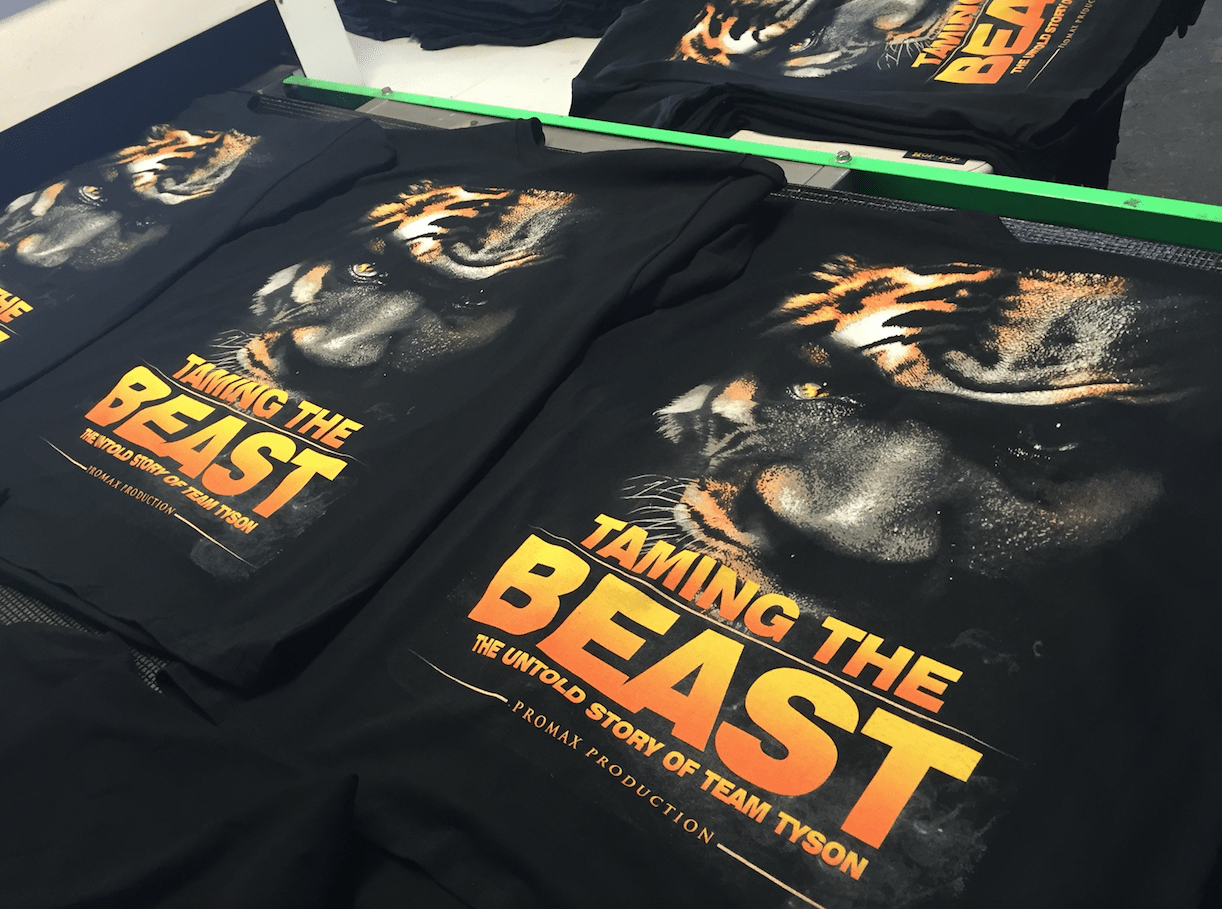Silk Screen Printing for Bold and Lasting Designs
Silk Screen Printing for Bold and Lasting Designs
Blog Article
Screen Printing Uncovered: Everything You Need to Know Regarding Tee and Garment Printing Techniques
Screen printing is a fascinating approach that incorporates art with technique, providing limitless possibilities for creativity. Prepared to discover the essential aspects that make screen printing an art form?
The Basics of Display Printing: Just How It Works
When you dive right into display printing, you'll discover it's both a science and an art. At its core, display printing includes developing a stencil, or display, that allows ink to travel through just in particular locations (screen printing kit). You begin by choosing your design and preparing your screen with a light-sensitive emulsion. Once you expose this solution to light, it solidifies, leaving your design as a negative room.
Following, you'll mix your inks and prepare your printing surface area. Placement the display over the material, after that utilize a squeegee to press ink with the display onto the garment. This process requires accuracy, as you desire clear, vibrant prints. After printing, you'll heal the ink with heat, guaranteeing it complies with the fabric and lasts via cleans. Each action is necessary, and understanding them will elevate your display printing abilities, changing simple garments into unique, meaningful pieces.
Types of Screen Printing Strategies
As soon as you understand the basics of display printing, it's time to discover the numerous techniques that can elevate your designs. One popular method is standard screen printing, where ink is pushed through a stenciled display. This strategy is wonderful for bold, lively colors. There's water-based ink printing, which uses a softer feel and is environment-friendly, but it needs a various approach to healing.
An additional choice is plastisol printing, known for its toughness and brilliant shades, making it a favored for many brand names. Experiment with halftone printing to develop slope effects and elaborate styles.
Important Devices for Screen Printing
To accomplish sensational results in screen printing, having the appropriate tools is fundamental. You'll require a sturdy screen printing structure, which holds the mesh that moves your layout onto the garment. Next off, spend in top notch squeegees; these are necessary for applying ink uniformly across the screen.
Selecting the Right Inks and Products
When selecting inks and products for display printing, you need to consider the kind of ink that functions ideal for your project. Think of textile compatibility to ensure your layouts look last and great lengthy. Discover environmentally friendly ink choices to make your printing procedure more lasting.
Sorts Of Display Inks
Selecting the best display ink is important for accomplishing dynamic, sturdy prints that satisfy your job's demands. There are a number of types of screen inks to examine. Specialized inks, such as glow-in-the-dark or metallic, can add one-of-a-kind results to your layouts.

Fabric Compatibility Considerations
Comprehending textile compatibility is crucial for achieving high-grade display prints, particularly because various materials react uniquely to numerous inks. Constantly evaluate your inks on sample material to assure they adhere appropriately and preserve color integrity. Additionally, keep in mind that textile weight and texture can affect the final end result, so picking the ideal ink and material combo is essential for your project's success.
Eco-Friendly Ink Options
Environment-friendly inks are ending up being a preferred selection for display printers who intend to decrease their ecological impact while keeping high quality. When choosing inks, consider water-based inks, which are much less hazardous and easier to tidy up contrasted to conventional solvents. These inks bond well with fabrics, supplying dynamic outcomes without hazardous chemicals. You might additionally check out eco-solvent inks that make use of less volatile organic substances (VOCs), making them a safer option for both your health and wellness and the planet.
Additionally, seek inks made from eco-friendly resources, such as soy or vegetable-based alternatives. By selecting the ideal inks and materials, you'll not only create spectacular designs but likewise add to a more lasting printing process. Make the switch, and your prints will mirror your commitment to the setting!
Preparing Your Layout for Screen Printing

File Style Needs
To guarantee your style looks sharp and vivid on textile, you'll need to pay very close attention to file format needs for visit site screen printing. Beginning with vector documents like AI or EPS, as they can be scaled without losing quality. If you make use of raster photos, choose high-resolution documents, such as TIFF or PNG, preferably at 300 DPI. Stay clear of utilizing JPEGs, as they can shed quality when resized. Make sure your design has a clear background to avoid undesirable white sides on your prints. Lastly, keep color settings in mind; CMYK is common for screen printing, so transform your RGB creates accordingly. By complying with these guidelines, you'll set your art work up for a successful print.
Color Separation Techniques
Color splitting up is an important action in preparing your layout for screen printing, and grasping it can significantly improve your print high quality. You'll require to damage your layout into private colors, as each shade requires a different screen during printing. This precision not only guarantees precise color representation but also streamlines the printing procedure.
Resolution and Size
Attaining the very best lead to screen printing begins with assuring your layout has the ideal resolution and size. Ideally, your artwork needs to be at the very least 300 DPI (dots per inch) for sharp, clear prints. If you utilize lower resolution, your final item might look less than professional and pixelated.
When it comes to dimension, take into consideration the dimensions of your print location. Layout your artwork to match the last print size, ideally developing it in the actual measurements you'll be publishing. This method, you'll stay clear of any kind of unforeseen scaling problems.
Always inspect your layout in both vector and raster layouts. Vector graphics can be scaled without losing quality, making them perfect for screen printing. Preparing appropriately will ensure your layout looks outstanding on every garment!
Step-by-Step Screen Printing Process
Display printing is a dynamic procedure that enables you to create lively styles on various surface areas. To get started, you'll require a display, solution, and your picked ink.
After cleaning out the unexposed solution, your screen prepares. Set it up on your printing surface and straighten your garment below it. Put ink onto the display and make use of a squeegee to press the ink with the stencil onto the textile. Raise the screen very carefully and allow the print dry. Lastly, cure the ink using heat to ensure toughness. That's it! You have actually effectively display published your style.
Tips for Effective Display Printing Projects
While you're diving right into your screen printing jobs, keep in mind that prep work is key to success. Begin by collecting all your materials-- inks, mops, garments, and displays. A clean workspace helps avoid unwanted errors, so tidy up before you begin.
Next, verify your art work is high-resolution and effectively sized for your garment. Test your display for appropriate helpful site direct exposure and clean it extensively to prevent smudges. When blending your inks, adhere to the manufacturer's guidelines to attain the appropriate uniformity.
During printing, use also pressure with your squeegee for constant results. Do not hurry; take your time to validate each print meets your requirements. After printing, allow your garments completely dry entirely prior to managing or packaging them.
Finally, always keep a sample of your help future referral. By doing this, you can assess your development and improve your methods gradually. Delighted printing!

Regularly Asked Inquiries
How much time Does It Require To Set up a Display Printing Job?
Establishing a display printing task normally takes about thirty minutes to an hour. You'll prepare the displays, mix inks, and change the press. The moment differs based upon intricacy and experience, so stay organized!
Can I Print on Various Textile Keys In Making Use Of the Same Method?
Yes, you can publish on different material types using the same technique, yet you'll need to change your inks and settings. Some fabrics take in ink in different ways, so experimenting assurances the most effective outcomes for each material.
What Prevail Mistakes to Prevent in Display Printing?
When screen printing, avoid common blunders like using the incorrect ink, ignoring appropriate exposure times, or missing pre-press checks. Always evaluate your configuration and keep clean screens to ensure top quality results each time.
Exactly How Can I Properly Tidy and Preserve My Screen Printing Equipment?
To effectively tidy and keep your display printing devices, you must consistently wash displays with appropriate solvents, inspect mops for wear, and ensure all tools are stored dust-free and completely dry. Uniformity enhances and prevents pricey repair services performance.
Is Display Printing Environmentally Pleasant Compared to Various Other Methods?
Display printing can be extra eco friendly than various other approaches, especially if you make use of water-based inks and eco-conscious materials. By selecting sustainable materials and practices, you lower waste and reduce your effect on the earth.
Display Printing Uncovered: Every Little Thing You find more info Required to Know Concerning T-Shirt and Garment Printing Techniques
At its core, display printing includes producing a pattern, or display, that enables ink to pass via only in particular areas. Placement the display over the textile, then use a squeegee to press ink via the screen onto the garment. One popular method is typical screen printing, where ink is pressed through a stenciled display.When choosing inks and products for screen printing, you require to take right into account the kind of ink that works ideal for your task.
Report this page